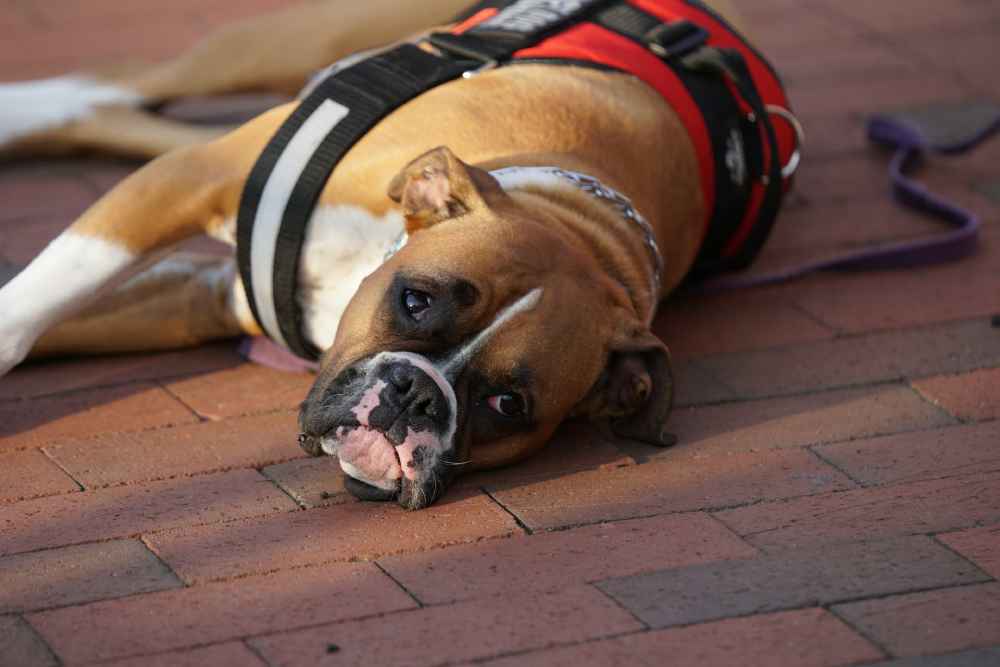Choosing Comfort and Safety for Your Energetic Companion
Pit Bulls are known for their strong muscles, friendly personality, and boundless energy. As a result, they require a sturdy harness that can withstand their physicality during walks and playtime. Collars can pressure the neck, especially when dealing with solid breeds that tend to pull.
A well-designed harness distributes pressure evenly across the body, making the dog safer and more comfortable. This setup also helps maintain better control while avoiding discomfort for the dog.
Qualities of the Ideal Pit Bull Harness
The key to a stress-free walk with your energetic canine lies in finding the best harness for pitbulls, which ensures safety, comfort, and durability. A top-tier harness for a pit bull isn’t just about toughness; it’s also about how effortlessly it fits into your dog’s daily routine.
A quality harness should be easy to put on and remove, especially for a pit bull that might not stay still. Look for a material that can withstand the test of time and activity, resisting tears and frays from energetic play.
Breathability is essential to ensure your dog remains relaxed and comfortable, particularly during warm weather or prolonged exercise. Adjustability is critical, providing a customizable fit for Pit Bulls of different sizes and shapes.
Safety features like reflective strips for nighttime visibility are a bonus. Ultimately, the ideal harness supports your Pit Bull’s natural movements and provides peace of mind, knowing your furry companion is secure.
The Different Types of Harnesses Available
There’s an ample selection of harnesses to suit various needs and preferences. As the name suggests, step-in harnesses are designed for dogs to step into, making them straightforward to use.
Like many pit bulls, vest harnesses offer more coverage and padding, adding comfort for dogs with short fur or sensitive skin. No-pull harnesses, often with front attachment points, aim to curb the natural inclination to pull by redirecting the dog sideways and refocusing their attention on the owner.
Knowing your pit bull’s temperament and regular walking environment will steer you toward the suitable harness types. It’s also worth considering a harness designed explicitly with the breed’s physique in mind to ensure an optimal fit and function.
The Role of Proper Fit and How to Measure Your Pit Bull
A poorly fitted harness can lead to escape attempts, chafing, and even injury, particularly with a robust and vigorous breed like the pit bull. To prevent these issues, accurate measurements are essential. This typically involves measuring the widest part of your dog’s chest and neck.
However, even the best measurements can be in vain if the harness lacks proper adjustability. Look for harnesses with a range of adjustment points to fine-tune the fit as needed, a feature particularly useful as dogs grow or experience weight changes.
Once the harness is on, ensure enough room for comfortable movement. A good rule of thumb is fitting two fingers under the straps; snug but not constricted is what you’re aiming for. This balance is critical in maximizing your dog’s comfort and the harness’s effectiveness.
Training Tips Using the Harness
When introducing your Pit Bull to a harness, patience and positive reinforcement are your best allies. Begin by letting your dog wear the harness for short periods indoors, rewarding them with treats and praise to create positive associations.
Gradually increase the duration of harness wear before transitioning to the outdoors. During this initial period, avoid areas with many distractions to let your dog acclimate calmly to the sensation of wearing a harness. The ultimate goal is for your dog to view the harness as an accessory that precedes fun and adventure rather than a constraint.
The Impact of Harnesses on Health and Behavior
The impact of a well-chosen harness on your pit bull’s health can be significant. A harness can alleviate pressure on the throat, especially for dogs that pull, which minimizes the chance of respiratory issues.
Additionally, a harness well-suited for a Pit Bull can prevent skin wear due to rubbing, ensuring your companion is always at ease. Behaviorally, the proper harness can lead to better walking manners and less pulling, as some designs redirect the dog’s energy and attention.
Harness Maintenance and Care
Frequent maintenance keeps your harness in prime condition. This can mean a simple wash to remove dirt and odors or a detailed check for signs of wear, like frayed straps or weakened buckles.
Maintenance routines can vary depending on the type of harness and the material it’s made from. Sturdy fabrics will require less frequent replacement.

